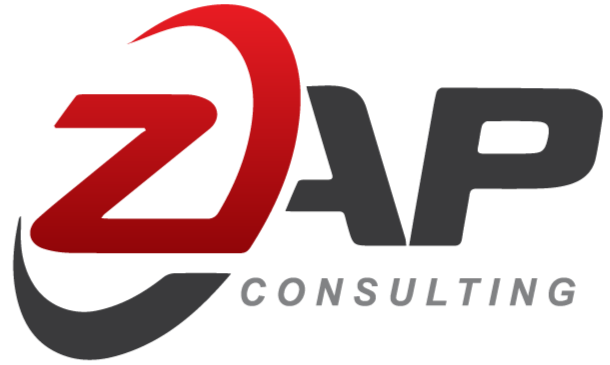Where there is fire, there is smoke, and where there is smoke, there is potential for smoke damage. Smoke exposure, if not quickly addressed, can significantly degrade household and commercial electronics, appliances, and heating and air conditioning systems. In addition to the pungent smoky odor, smoke residue is acidic and corrosive in nature, leaving electronic components, like circuit boards, vulnerable to damage.
Does that mean all items exposed to smoke have to be replaced? Not necessarily. In this article, we'll delve into how smoke can damage sensitive electronics, like televisions, laptops, and security camera systems, as well as appliances, like microwaves and refrigerators, and which factors to consider when determining if repair or replacement is needed to restore the insured's property to pre-loss condition.

What is smoke residue, soot, or film?
According to the New York State Department of Health, smoke produced from any type of fire, "is a mixture of particles and chemicals produced by incomplete burning of carbon-containing materials. All smoke contains carbon monoxide, carbon dioxide and particulate matter (PM or soot).
Smoke can contain many different chemicals, including aldehydes, acid gases, sulfur dioxide, nitrogen oxides, polycyclic aromatic hydrocarbons (PAHs), benzene, toluene, styrene, metals and dioxins. The type and amount of particles and chemicals in smoke varies depending on what is burning, how much oxygen is available, and the burn temperature."
The residue, soot, or film left behind causes damage to walls, textiles, furniture, appliances, and electronics.
The National Fire Protection Association (NFPA) discovered an estimated $15.9 billion in property damage due to fires in the United States in 2021.
How does smoke damage electronics?
Smoke, and the harmful residue it leaves behind, can damage common electronics, like computers, audio/video equipment, and cameras. Should smoke residue or film infiltrate the internal components, like wiring, circuit boards, and fuses, physical damage can occur. The acidic and corrosive smoke residue and soot can eat away at the internal electronics, resulting in short circuits, electrical failure, and ultimately non-functionality.
Did you know most wildfires are caused by humans? Check out 10 facts about wildfires.
Smoke residue, soot, or film can result in progressive damage to electrical components if not addressed and cleaned quickly. When investigating electronics or appliances with potential damage from smoke exposure, you should ask yourself the following preliminary questions:
Where did the fire occur? Where were the claimed items in relation to the fire?
How long did the fire burn?
Are there design features that would make the unit more or less susceptible to internal smoke damage?
Unsurprisingly, items in close proximity to the fire are more likely to sustain damage from smoke exposure. In a cooking fire, for example, appliances in the kitchen of the residence, such as a microwave or range hood, are more likely to sustain extensive damage from the smoke, rather than a washing machine on the lower floor.
The longer the fire burns, the more smoke is generated, and the more likely for appliances and electronics to sustain damage from the exposure. In an ideal world, fires are extinguished quickly and safely; however, this is not always the case. Of course, this factor becomes more complicated when evaluating instances of smoke exposure from a wildfire. Wildfires can burn for weeks, increasing the probability of irreparable smoke damage to exposed electronics and appliances.
Fire Season has become a thing of the past. Read about how to prepare for a Fire Year.
The design of an appliance can also contribute to the likelihood the unit will sustain damage from smoke exposure. For example, an average countertop microwave is not manufactured to withstand smoke or fire damage. There are multiple points of entry, including vents and seams, for smoke residue, soot, and film to infiltrate a countertop microwave and cause internal failure. On the other hand, a built-in refrigerator may be better protected from smoke exposure due to the sealed system design.
Should smoke-damaged items be repaired or replaced?
Investigating appliances or electronics with smoke damages relies heavily upon a thorough sensory examination, in addition to conventional diagnostic testing. While fire-related damages may be obvious to the naked eye, additional olfactory and tactile examinations are often necessary to discover non-visible smoke damages stemming from the loss. This thorough investigation is needed to determine whether an item can be repaired or if replacement is needed.
An appliance or electronic may appear physically intact; however, as we've mentioned in this post, smoke residue can be extremely corrosive to major components, including circuit boards, electrical systems, and motors. Smoke-related corrosion has the potential to cause cascading failures if left unaddressed.
Smoke residue is acidic in nature and can result in physical damage, including discoloration, brittleness, cracking, and peeling. Smoke residue can impact common non-electronic appliance materials, including plastic, metal, and glass.
The unique challenge with smoke/fire-related claims is that due to the corrosive nature of smoke residue, appliances may present issues over time, even after all soot/residue has been addressed within the loss location.
When determining whether to repair or replace an item with smoke damage, you should consider the following factors:
The extent of physical damage - is there a thick layer of smoke residue, soot, or film on the surface? In the interior?
Functionality - is the item working normally? Are there multiple issues observed?
Replacement cost - would repair attempts, including attempts to resolve any physical damage from the smoke exposure, be worth it?
A thorough on-site investigation will assist in verifying the extent of damage, as well as evaluating item specifications to determine fair and accurate repair vs replacement costs. If you need assistance with a residential or commercial fire/smoke property loss, reach out to Zap today.







